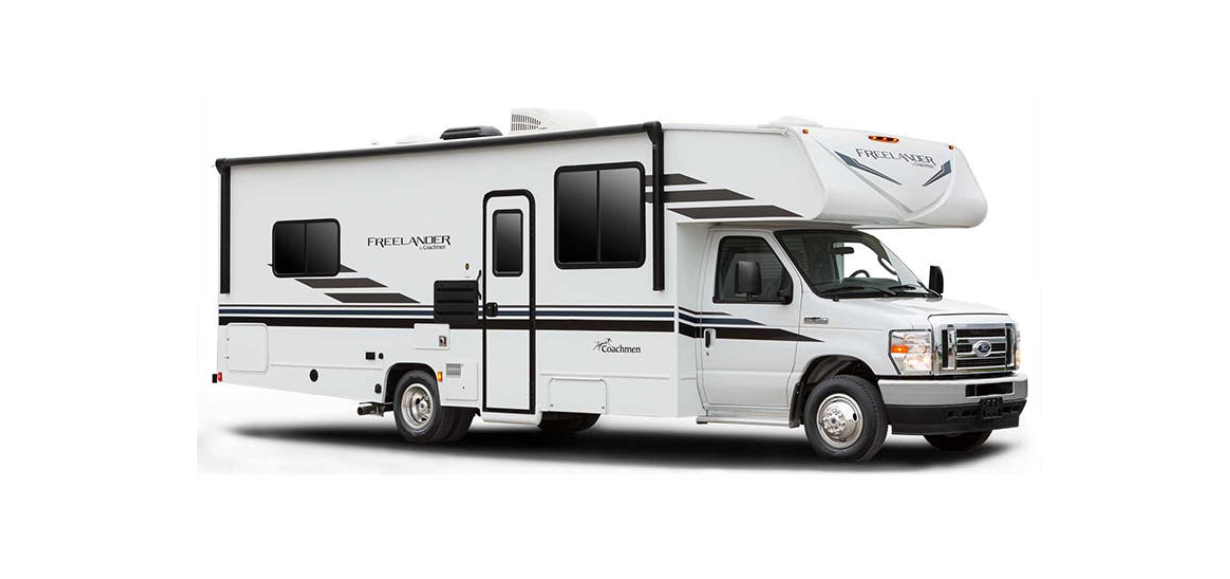
2022 Coachmen Freelander CLASS C MOTORHOMES Chassis Seat Belts
Chassis Seat Belts
Studies have shown that if you are in a crash while using seat belts, your chances of being hurt or killed are greatly reduced. Seat belts will move with you and lock up if a crash occurs. They keep you from being thrown from the vehicle and against parts inside of your vehicle. In addition to protecting you from injury as a driver, seat belts help you keep control of the vehicle. If you are struck from the side or make a quick turn, the force could push you sideways and therefore you cannot steer the vehicle if you are not behind the wheel. In many states, it is illegal to drive or to be a front-seat passenger, without wearing a seat belt. Seatbelts may be required under graduated driver licensing for drivers or all occupants of the vehicle. All occupants must be furnished with and use seat belts while the motorhome is in motion. However, it is not intended for all seats to be simultaneously occupied while the vehicle is in motion without regard to the total loaded weight of your motorhome. Before you drive away, always fasten your seat belt and make sure all your passengers are using seat belts or child restraints, if equipped. Also, remember to lock the vehicle’s doors and turn on the childproof locks, if equipped, if children are in the vehicle. Periodically inspect the seat belts in your motorhome to make sure they work properly and are not damaged. Carefully inspect to make sure there are no nicks, tears, or cuts in the belt material. Replace the motorhome seat belts as necessary.
It is important to wear the seat belt correctly
- A shoulder harness is worn across the shoulder and chest with minimal if any slack. The shoulder harness should not be worn under the arm or behind the back. Wearing the harness the wrong way could cause serious internal injuries in a crash.
- The lap belt should be adjusted so that it is snug and lies low across your hips after fastening. If you have an automatic shoulder belt, be sure to buckle your lap belt as well. Otherwise, in a collision, you could slide out of the belt and be hurt or killed.
- You should be seated upright with your back against the seat and feet on the floor. Improper seating positions, such as slouching or resting one’s feet on the dashboard can result in reduced effectiveness of the vehicle’s restraint system and possibly result in injury.
- Seat belts should be worn even if the vehicle is equipped with airbags. While airbags are good protection against hitting the steering wheel, dashboard or windshield, they do not protect you if you are hit from the side or rear or if the vehicle rolls over. In addition, an airbag will not keep you behind the wheel in these situations.
- The law requires that all children under the age of 12 must be secured in the rear seat and wear appropriate seat restraints while the vehicle is in motion.
NOTICE
The sleeping accommodations in your motorhome are designed for occupancy ONLY while the vehicle is parked and set up for camping.
WARNING
If your RV is equipped with an airbag by the chassis manufacturer, the description and important safety information about the airbag system can be found in the chassis owner’s manual. Whether or not an airbag is provided, all occupants including the driver should always wear their seat belts any time the RV is in motion. Failure to properly wear a seat belt or sitting in the RV where no seat belt is provided while the RV is in motion increases the risk of severe injury or death in the event of a crash. Failure to inspect and, if necessary, replace damaged seat belts could result in severe personal injuries in the event of a collision.

